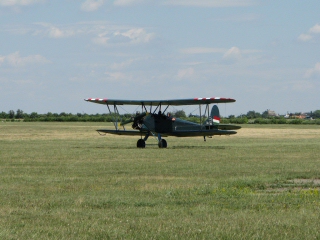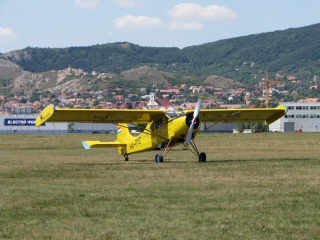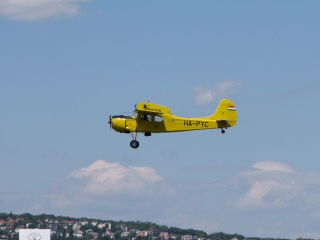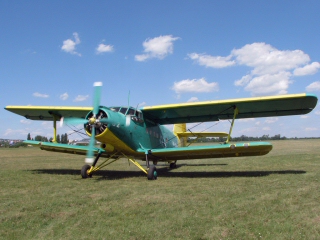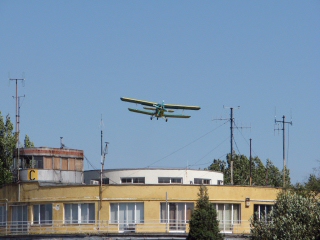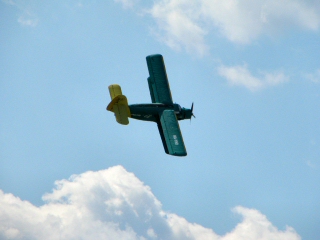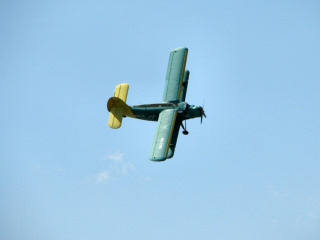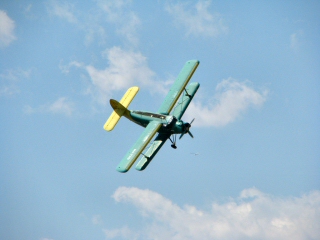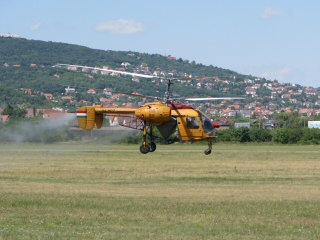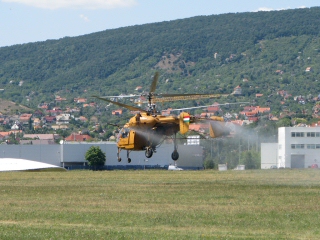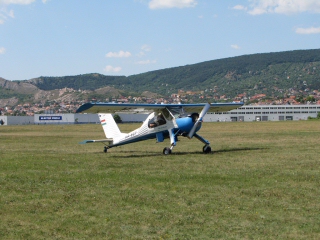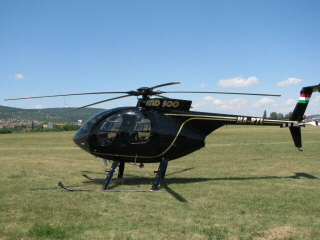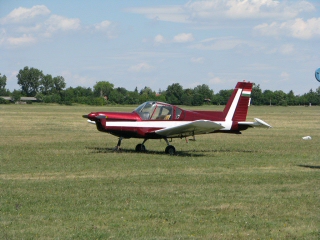June 13, 2009
Centrally organised agricultural aviation in Hungary started when the Aerial Pest-control Service (Repülőgépes Növényvédő Állomás) was founded on February 1, 1959. There were earlier experiments, and even regular usage of Polikarpov Po-2 biplanes converted to crop-dusters, but having a central organisation turned aerial application into an institution available for co-op farms, which was important for the basically agronomy-based country. The HQ of the new organisation was Budaörs airfield. Former employees of the RNÁ and its successors (like MÉM RSZ and later Air Service) gathered right there on a sunny summer day, a little more than 50 years later.
Not every type of aircraft ever used by the RNÁ/RSZ was here, but the oldest one, the Po-2 was represented by HA-PAO. Of course it's the basic two-seater version, and not a crop-duster.
A picture from the Aeronautical Museum of Budapest: the crop-duster version of the Po-2.
The first type introduced by the RNÁ was the Aero L-60 "Brigadyr" from Czechoslovakia. Basically they were a failure, so the next type, ...
... the PZL-101A "Gawron" arrived one year later. This plane is basically a polish development on the Yakovlev Yak-12. A very stable, reliable machine - quite a few of them are still in operation, albeit mostly as towplanes.
The next type, introduced in 1967: the Zlin Z-37A "Cmelak". They're still being used, but just like the "Gawron", usually not as agricultural planes. (Picture taken at a different time.)
Around the same time, a larger plane was also introduced at RNÁ: the Antonov An-2. To the left: starting the large radial engine. To the right: flying over the ancient main building of the airfield, built in 1937.
Now, these planes are really indestructable. As strange as this large biplane may look like, it's realiable, stable, and... fun!
A short video of the An-2 present at the celebrations. This was a passenger version, but crop-duster Antonovs are still used, even over cities for spraying pesticide (against mosquitos). It's quite a sight seeing such a plane 30 meters above the inner city of Budapest :)
The first helicopter used for aerial application in Hungary was the Kamov Ka-26. This is an underpowered, but very versatile and agile helicopter, which was also used by the air force. At total there were over 130 Kamov-26s registered in Hungary, which is quite a number for a small country.
This machine was presented in a true "maggot bomber" (nick-name of agricultural airmen and airplane in hungarian) style.
To the left: the PZL-104 "Wilga" was not used for crop-dusting, but it's still a popular machine in Hungary, even though it's less reliable and stable than the "Gawron". To the right: the Hughes/McDonnell-Douglas MD500E was the first american airplane reaching hungarian agricultural aviation. The first ones were brought in 1986, and most of them were sold after the political changes. This one - formerly HA-MSA - for example is used by the hungarian TV channel "RTL Klub".
Not of agricultural regard, but a nice plane anyhow: a Zlin 42 to the left. To the right: the hull of a Rubik "Kánya", a small towplane built in the 1940s, designed by Ernő Rubik Sr. - the father of Ernő Rubik Jr., the inventor of the Rubic Cube.
A few moments of the anniversary flights mixing with other traffic of Budaörs airfield.
Back to my main aviation page
Back to my main page...
